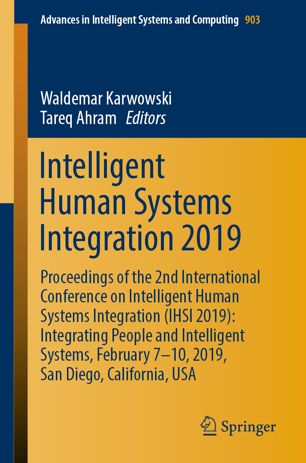

Most ebook files are in PDF format, so you can easily read them using various software such as Foxit Reader or directly on the Google Chrome browser.
Some ebook files are released by publishers in other formats such as .awz, .mobi, .epub, .fb2, etc. You may need to install specific software to read these formats on mobile/PC, such as Calibre.
Please read the tutorial at this link: https://ebookbell.com/faq
We offer FREE conversion to the popular formats you request; however, this may take some time. Therefore, right after payment, please email us, and we will try to provide the service as quickly as possible.
For some exceptional file formats or broken links (if any), please refrain from opening any disputes. Instead, email us first, and we will try to assist within a maximum of 6 hours.
EbookBell Team

4.1
50 reviewsThis book presents cutting-edge research on innovative human systems integration and human–machine interaction, with an emphasis on artificial intelligence and automation, as well as computational modeling and simulation. It covers a wide range of applications in the area of design, construction and operation of products, systems and services, including lifecycle development and human–technology interaction. The book describes advanced methodologies and tools for evaluating and improving interface usability, new models, and case studies and best practices in virtual, augmented and mixed reality systems, with a special focus on dynamic environments. It also discusses various factors concerning the human user, hardware, and artificial intelligence software.
Based on the proceedings of the 2nd International Conference on Intelligent Human Systems Integration (IHSI 2019), held on February 7–10, 2019, in San Diego, California, USA, the book also examines the forces that are currently shaping the nature of computing and cognitive systems, such as the need to reduce hardware costs; the importance of infusing intelligence and automation; the trend toward hardware miniaturization and power reduction; the need for a better assimilation of computation in the environment; and social concerns regarding access to computers and systems for people with special needs. It offers a timely survey and a practice-oriented reference guide for policy- and decision-makers, human factors engineers, systems developers and users alike.